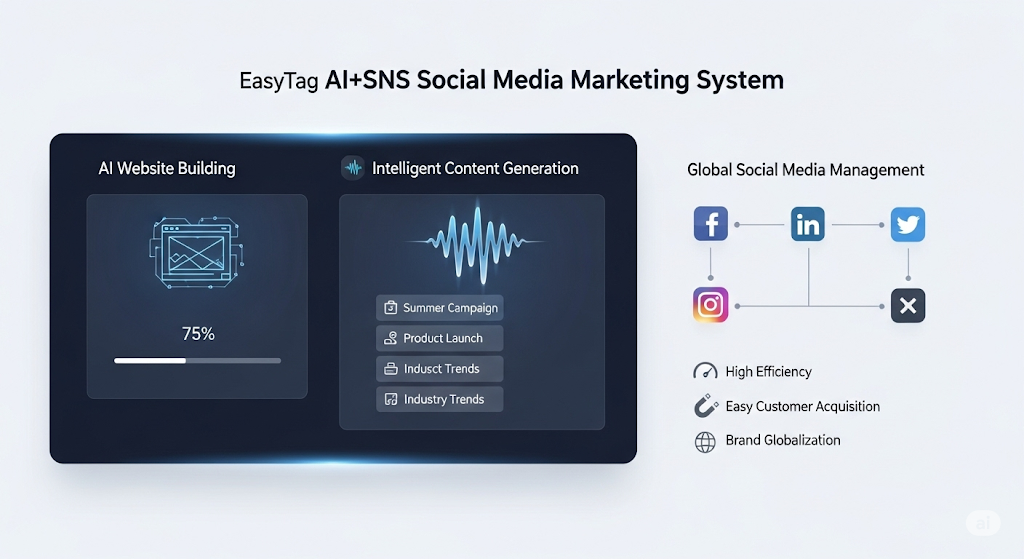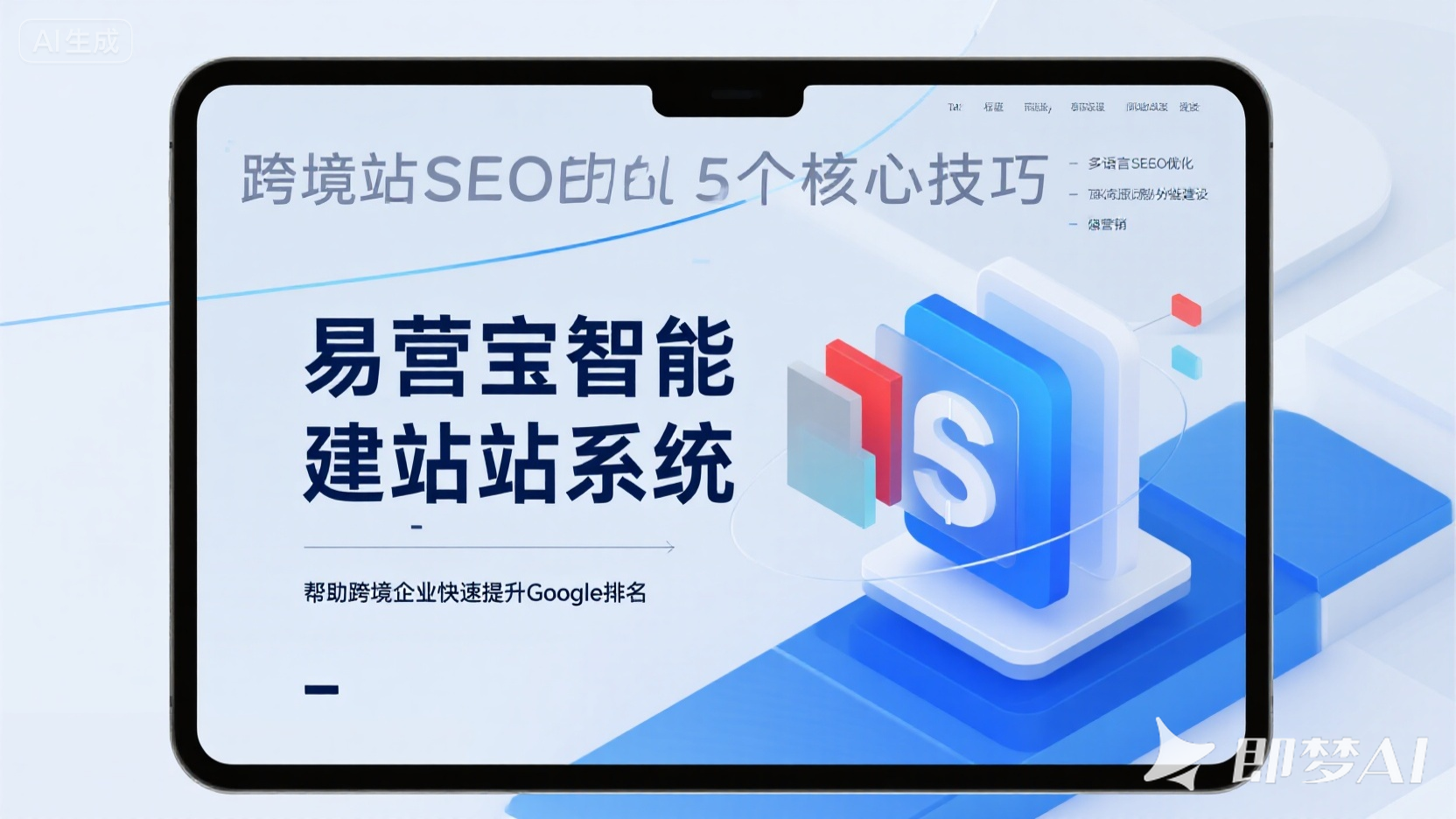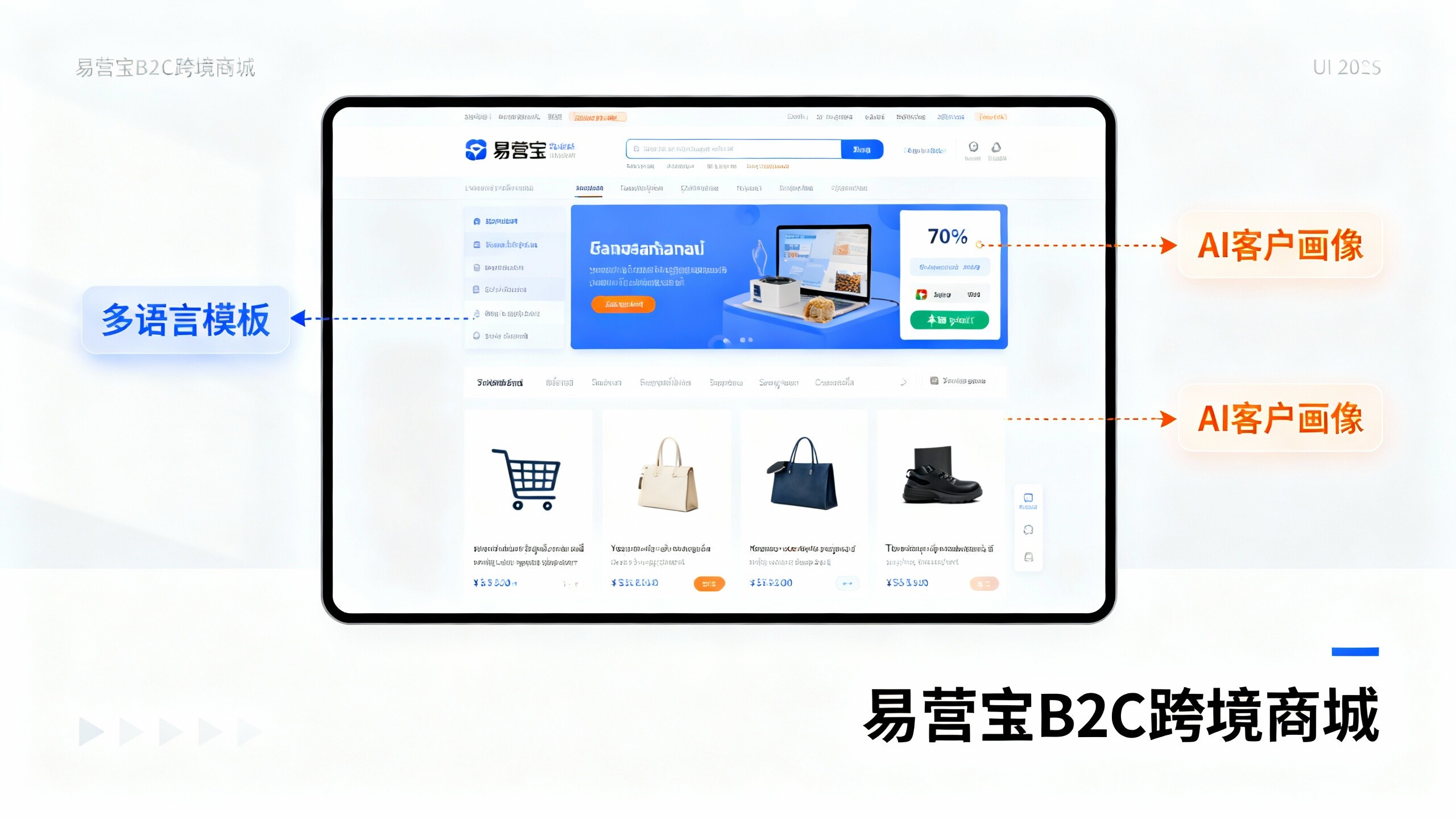Easy Operation Cloud Intelligent Website Marketing System Platform!
- Harbin City Partner Testimonial: AI Marketing Engine Boosts Conversion Rates by 5x2025-11-17View details
- Dalian City Partners' Real Record: Why Did They Choose AI Marketing Engine? The Results Are Astonishing2025-11-14View details
- New Opportunities for Wuxi City Partners: AI Marketing Engine Empowers Traditional Business Transformation2025-11-14View details
- Why is the AI Marketing Engine + City Partner Model Rapidly Exploding in Nanchang?2025-11-14View details
- Before becoming a Taiyuan City Partner, you must know these 5 truths about AI marketing engines2025-11-17View details
- Struggling with Facebook ad optimization? 3 steps to boost ROI over 50% with proven techniques2025-11-14View details
- How can an AI+SEM smart advertising marketing system achieve double the advertising efficiency?2025-11-14View details
- Using AI+SNS social media full-intelligent marketing system to increase fans by 100,000+ monthly2025-11-17View details
Common SEO Mistakes and Fixes Checklist for Multilingual Websites: A Must-Read for Foreign Trade Independent Site Operators
Introduction
This guide lists common SEO mistakes and fixes for multilingual websites, helping foreign trade independent websites build and implement multilingual SEO optimization. As a practical manual for information researchers and users/operators, this article focuses on four key aspects of multilingual website construction: structure, content, performance, and operation. It helps foreign trade teams reduce common pitfalls and improve conversion rates and search visibility in building multilingual independent foreign trade websites, promoting brands, and providing multilingual SEO optimization services.
I. Website Structure and Indexing Errors: Common Pitfalls of URLs, Hreflang, and Duplicate Content
In multilingual website construction, URL and indexing strategies are often overlooked. Common mistakes include: using automatically generated and unreadable query string URLs (such as session or parameter-driven URLs), causing search engines to fail to index pages in different languages correctly; inconsistent or missing hreflang tag configurations, preventing search engines from recognizing language and regional targets, thus affecting organic traffic distribution; and multiple paths in the same language generating a large amount of duplicate content, diluting page ranking. To fix these problems, a standardized URL strategy should be adopted (subdirectories or ccTLDs are recommended, depending on business needs and budget), canonical tags should consistently point to the main language version, hreflang syntax and cross-referencing should be strictly validated, and unique, indexable (non-duplicated) metadata and page semantics should be established for each language page. For teams operating independent foreign trade websites, it is recommended to treat "building a multilingual independent foreign trade website" as a standardization project: establish URL design guidelines at the beginning of website construction, submit sitemaps grouped by language to the search console, and regularly check for error pages using logs and crawl reports. A proper indexing strategy not only improves indexing efficiency but also provides a stable foundation for subsequent multilingual SEO optimization and brand promotion, avoiding waste in SEM optimization techniques and SEO content investment.
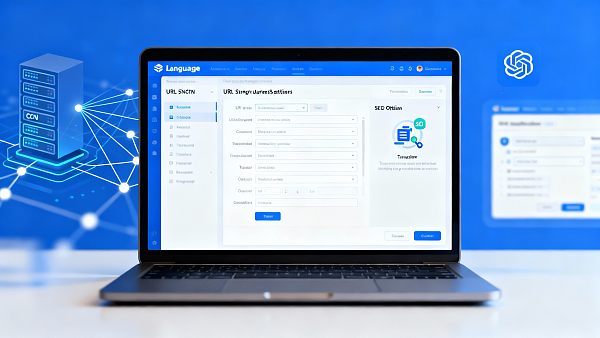
II. Translation and Localization Mistakes: How to Avoid Traffic and Conversion Losses Caused by "Literal Translation"
Content quality is the core of a successful multilingual SEO optimization service. Common problems include: over-reliance on unverified machine translation, leading to keyword mismatches and semantic biases; failure to conduct regional keyword research, ignoring local search behavior and long-tail keywords; and neglecting localization details (units of measurement, date formats, payment and logistics instructions), resulting in a degraded user experience. Remedial measures include adopting a human-machine collaborative translation process, developing localized keyword strategies for each market, and establishing a dynamic content synchronization mechanism to maintain version consistency. In practice, it is recommended to use industry-leading multilingual tools for one-click generation and synchronization, while retaining a human review process to ensure that the content conforms to both search logic and user habits. For example, leveraging advanced AI translation services can significantly improve efficiency and accuracy, while supporting dialect and regional terminology optimization and shortening the content launch cycle. For cross-border e-commerce and B2B foreign trade scenarios, a translation platform that can cover 249 languages and automatically adapt to local units of measurement and date formats can significantly reduce maintenance costs and improve conversion rates. For example, EasyTranslation AI Translation Center provides one-click generation of multilingual websites, dynamic content synchronization, and human-computer collaborative editing functions, which are suitable for the high-frequency update needs of multilingual websites, a powerful tool for foreign trade marketing.
III. Performance and Global Delivery: The SEO Impact of Page Speed, CDN, and Server Layout
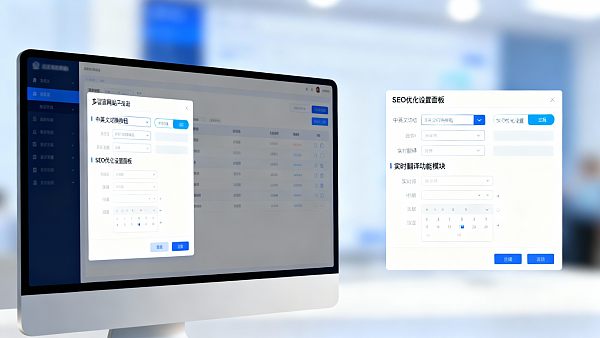
Performance directly impacts the search ranking and conversion rate of multilingual websites. Common errors include: failure to deploy global server acceleration or CDN, leading to latency in target markets; inadequate compression and lazy loading of images and scripts; and inconsistent mobile and desktop experiences, affecting mobile-first indexing. Recommended solutions include: deploying global server acceleration and intelligent routing; enabling automated image compression and lazy loading; optimizing critical rendering paths using preconnect and resource prioritization; and conducting A/B testing on cross-border advertising traffic and SEO traffic separately, adjusting landing pages based on data. Experience shows that a reasonable global server acceleration strategy can improve page load speed by nearly 40% and bring a 35% improvement in SEO scores. Furthermore, during the construction of multilingual websites, a unified performance baseline (e.g., first byte time, Largest Contentful Paint) should be established and incorporated into routine monitoring. For independent e-commerce websites aiming to gain sustained traffic through brand promotion and search, performance optimization is not only a technical requirement but also a necessary means to achieve higher ROI. Combining SEM optimization techniques to ensure consistency between ad landing pages and organic search pages can further improve conversion rates and reduce bounce rates.
IV. Operational and Promotional Errors: Common Issues with Tracking, Landing Pages, and Localized Marketing Strategies
Even with advanced technology and content, operational errors can still negatively impact the effectiveness of multilingual SEO optimization and independent e-commerce websites. Common issues include: failure to allocate clear KPIs to different markets, leading to a mismatch between keyword investment and SEM optimization techniques; missed tracking codes, events, and conversions across languages, preventing the formation of a closed-loop data system; and neglecting local channels (such as Yandex, Baidu, or regional social media), resulting in a single traffic source. To address these issues, it is recommended to establish independent tracking plans for each target market, use localized landing pages and ad creatives, and combine content promotion with a localized social media matrix. Brand promotion should focus on building trust: displaying compliance qualifications, localized logistics and payment instructions, and local reviews and case studies. Technically, using structured data (schema) to tag products, company, and local contact information helps improve search visibility and click-through rates. In the operational process, it is recommended to use weekly and monthly reports to evaluate the actual effectiveness of multilingual SEO optimization services, using traffic, keyword ranking, and conversion rates as core performance indicators, and iterating content and ad structure in a timely manner to form a closed-loop optimization strategy of "website building-customer acquisition-conversion."

Summary and Action Guidance
The success of a multilingual website is not accidental, but the result of collaborative efforts in structural design, content localization, performance assurance, and operational strategies. This article lists common errors and actionable fixes across four dimensions: URL and indexing, translation and localization, performance and global server acceleration, and operation and promotion. It aims to help independent e-commerce websites achieve steady growth in multilingual website construction and multilingual SEO optimization. E-Creative Information Technology combines AI and big data capabilities to provide full-chain support, from intelligent website building to SEM optimization techniques, from global server acceleration to multilingual SEO optimization services. Through partnerships with Google Premier Partners and Meta agencies, it accelerates brand promotion and overseas traffic deployment. If you wish to optimize your independent e-commerce website operations and improve organic search and advertising ROI, contact us immediately for customized diagnostics and solutions. To learn more about our solutions or get a free site diagnostic, please contact us to embark on a compliant and efficient growth path for your multilingual website.
- Website
- Independent site operation
- Foreign Trade Independent Website Operation
- Independent website building
- Global Server Acceleration
- B2B Foreign Trade
- Multilingual website construction
- SEO optimization services
- Multilingual SEO optimization
- Brand Promotion
- Campbell (name)
- SEO
- free-standing station
- SEO optimization
- Intelligent website building
- AI translation
- Multilingual SEO
- Multilingual SEO Optimization Services
- Foreign trade independent website
- Multi-language website
- Multilingual Website for Foreign Trade Marketing
- Multi-language foreign trade independent website construction
- Foreign trade independent website construction
- SEM optimization techniques
Related Articles
 Shijiazhuang City Partner Recruitment: Low-barrier entrepreneurship projects that ordinary people can also do?
Shijiazhuang City Partner Recruitment: Low-barrier entrepreneurship projects that ordinary people can also do? Is multilingual SEO optimization service worth it? Saves 60% of time compared to traditional solutions.
Is multilingual SEO optimization service worth it? Saves 60% of time compared to traditional solutions. Must-Read for Foreign Trade Enterprises: How Can a Multilingual Website Increase Conversion Rates by 40%?
Must-Read for Foreign Trade Enterprises: How Can a Multilingual Website Increase Conversion Rates by 40%?
Related Products











